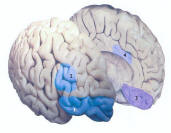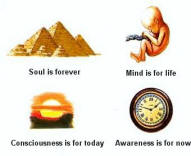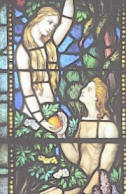Neurology Anatomy Physiology
December 14, 2021
Contents
Neurotransmitter
The Brain
Spinal Cord
Peripheral Nervous System
Autonomic Nervous System
Senses:
Sight,
Senses,
Smell,
Taste,
Senses,
Senses
Memory
Higher Functions
Altered States
Higher Functions
 The frontal lobes are where ideas are created; plans constructed; thoughts joined with their associations to form new memories; and fleeting perceptions held in mind until they are dispatched to long-term memory or to oblivion. This brain region is the home ofconsciousness, where the products of the brain's subterranean assembly lines emerge for scrutiny. Self-awareness arises here, and emotions are transformed in this place from physical survival systems to subjective feelings. The area of the frontal lobe most closely associated with the generation of consciousness is in the prefrontal cortex. Figure 30 shows four areas, which endow human with fucntions not available in other animal:
The frontal lobes are where ideas are created; plans constructed; thoughts joined with their associations to form new memories; and fleeting perceptions held in mind until they are dispatched to long-term memory or to oblivion. This brain region is the home ofconsciousness, where the products of the brain's subterranean assembly lines emerge for scrutiny. Self-awareness arises here, and emotions are transformed in this place from physical survival systems to subjective feelings. The area of the frontal lobe most closely associated with the generation of consciousness is in the prefrontal cortex. Figure 30 shows four areas, which endow human with fucntions not available in other animal: Figure 30 Higher Functions
[view large image]
- Orbito-frontal cortex - This area inhibits inappropriate action, freeing us from the tyranny of our urges and allowing us to defer immediate reward in favour of long-term advantage.
- Dorsolateral prefrontal cortex - Things are held "in mind" here, and manipulated to form plans and concepts. This area also seems to choose to do one thing rather than another.
- Ventromedial cortex - This is where emotions are experienced and meaning bestowed on our perceptions.
- Anterior cingulate cortex - It helps focus attention and "tune in" to own thoughts.
Consciousness is remarkably difficult to define. It is variably identified to the soul, the mind, and somehow associated with awareness (Figure 31). The soul belongs to religious domain, which is not possible to investigate scientifically. It was believed that the mind was in the brain and controlled the body, but was something intangible. The development in neuroscience has brought new insights into the subject of consciousness. This new science has adopted the working definition of consciousness as a state of perceptual awareness. Conscious attention allows us to shut out extraneous experiences and focus on the critical event that confronts us. It recognizes two characteristics to the conscious state: unitary and subjectivity. The unitary nature of consciousness refers to the fact that our experiences come to us as a unified whole. All of the various sensory modalities are melded into a single, coherent, conscious experience. This is the "easy problem" that neuroscience can probe into viaNCC.
 | The answer was still elusive at the end of Francis Crick's life, when he was struggling in vain trying to understand the role ofclaustrum in consciousness. Subjectivity poses the more formidable scientific challenge. Each of us experiences a world of private and unique sensations that another person can only appreciate indirectly. If the senses ultimately produce experiences that are completely and personally subjective, then we cannot arrive at a general definition of consciousness because there would be an infinite number of them. This is the "hard problem" of consciousness. According to some researchers, science cannot take on consciousness without a significant change in methodology, a change that would enable scientists to identify and analyze the elements of subjective experience. |
Figure 31 Consciousness | Others argue that we only need an underlying theory. Just like the Newtonian mechanics, one theory is sufficient to describe the multitude of orbits and trajectories. |
 | The nature of free will is another issue that can be tackled by the new biology of mind. Free will is the ability to act or make choices as a free and autonomous being and not solely as a result of compulsion or predestination. According to Freud's discovery of psychic determinism - the fact that much of our cognitive and affective life is unconscious - there is not much left for freedom of action. Experiment on the correlation between electrical activity of the brain and movement (lifting a finger for example), reveals that the electrical activity precedes the movement by 200 milliseconds. It is proposed that the process of initiating a voluntary action occurs in an unconscious part of the brain, but that just before the action is taken, consciousness is recruited to approve or veto the action. In the 200 milliseconds before a finger is lifted, consciousness determines whether it moves or not. Thus, our conscious mind may not have free will, but it can freely modify inappropriate behavior (Figure 32). This is the reason for the laws in our society to hold all of us accountable for our own action. It is suggested that we idth="15%" style="color: #000">Figure 32 Free Will | should update our idea of free will to mean self-control over our
behavior. |
[Top]
Powered by cidpusa.org